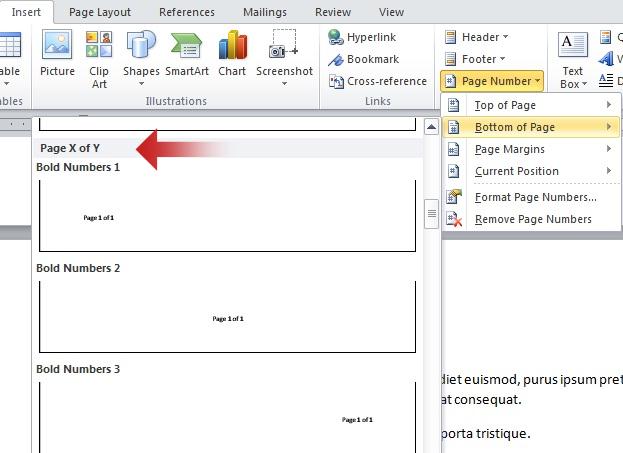When you add page numbers to a Microsoft Word document, you usually begin with the number '1' starting the first page. However, if you've combined all elements of a document into one file, you may need to re-start numbering in the middle of the file itself. This wikiHow teaches you how to insert a check box in a Microsoft Word document. Open a new file in Microsoft Word. Do so by opening the app shaped like a blue W. Then click on File in the menu bar at the top of the screen, and click on. Select Insert Page Number, and then choose the location and style you want. If you don't want a page number to appear on the first page, select Different First Page. If you want numbering to start with 1 on the second page, go to Page Number Format Page Numbers, and set Start at to 0.
- Page No In Word
- How To Put Page No In Word
- Insert Page No In Word
- Change Page No In Word
- How To Set Page No In Word
- The page count begins with the very first page of your ETDR.
- Title page up to Table of Contents: Page numbering begins with 'i' in lowercase Roman numerals (i, ii, iii) and is NOT displayed.
- Table of Contents page up to Chapter 1: Lowercase Roman numerals continue counting and ARE displayed.
- Starting at Chapter 1: Page numbering begins with “1” and is displayed in Arabic numbers (1, 2, 3) through the rest of the document.
- Section breaks are used to control page numbering. With Word Show/Hide turned on, they look like this: Section Break (Next Page)
This system of page counting and displaying page numbers is built into the template and shouldn’t require any attention. As you work with your document, inadvertently deleting or modifying page-numbering components can cause some issues.
If page numbers do not display properly, select the solution you need and follow the steps below.
Fix page numbers starting over at “1” in body of document
Zotac 210 driver download. If you see page numbers reverting back to “1” in the body of your document, it’s likely this is occurring at a section break. Follow these steps to correct the problem:
- Click anywhere on the page where the numbering is starting over at “1.” If you’re not in the Header and Footer view, select the Insert tab, click Footer and click Edit Footer.
- Put the cursor in the footer; DO NOT select the page number. Click Page Number and then Format Page Numbers.
- In the Format window, click Continue from previous section and then click OK.
Repeat these steps at each occurrence of a section break or when page numbers are reverting back to “1”.

Fix page numbers from beginning to Chapter 1
Follow these A, B, C, and D steps in order. Or, use the ETDR Request form to get help from an ETDR consultant (requires eID/password).
Step A. Check for required section breaks (at Table of Contents, Chapter 1).
- Open your document in Word. Click the Show/Hide button (it looks like a black Paragraph symbol) to turn on hidden formatting symbols.
- Just before the Table of Contents page, check for a section break. If a section break is present, skip to Step 4.
- If the Section Break is missing, place your cursor just in front of the “T” in “Table”. Click the Page Layout tab. In the Paragraph section, select Breaks. Under Section Breaks, select Next Page.
- Just before the start of Chapter 1, check for a section break. If the section break is present, skip to Step B below.
- If the section break is missing, place your cursor just after 'Chapter 1 - ' and in front of the first word in the title. Click the Page Layout tab. In the Paragraph section, select Breaks. Under Section Breaks, select Next Page.
Step B. Fix page numbers from title page to before Table of Contents.
- Place the cursor anywhere on the title page.
- On the Insert tab, select Footer and click on Edit Footer.
- If you see a page number in the footer (at the bottom of page), select the number and press the Delete key.
- With the cursor in the footer, click Page Number and then Format Page Numbers.
- In the Page Number Format window, set the Number format to i,ii,iii,… Under Page numbering, select Start at and set the number to “i.” Click OK.
Step C. Fix page numbers from Table of Contents to before Chapter 1.
- Scroll to the first page of your Table of Contents. If you’re not in the Header and Footer view, select the Insert tab, click Footer and click Edit Footer.
- If “Same as Previous” or “Link to Previous” is visible just above the footer, remove it by clicking Link to Previous in the Design tab's Navigation section.
- Make sure the Design tab is still selected. With the cursor in the footer, click Page Number and then Format Page Numbers.
- In the Page Number Format window, set the Number format to i,ii,iii,… Under Page numbering, select Continue from previous section. Click OK.
- If no page number is displayed, insert it: Click Page Number, then Bottom of Page, then Plain Number 2 (centered) or Plain Number 3 (right-justified).
Step D. Fix page numbers from Chapter 1 on.
- Scroll to the first page of Chapter 1. If you’re not in the Header and Footer view, select the Insert tab, click Footer and click Edit Footer.
- If “Same as Previous” or “Link to Previous” is visible just above the footer, remove it by clicking Link to Previous in the Design tab's Navigation section.
- With the cursor in the footer, click Page Number and then Format Page Numbers.
- In the Page Number Format window, set the Number format to 1,2,3,… Under Page numbering, select Start at and set the number to “1”. Click OK.
- If no page number is displayed, insert it: Click Page Number, then Bottom of Page, then Plain Number 2 (centered) or Plain Number 3 (right-justified).
- When you're all done, on the Design tab, click Close Header and Footer.
Lennar digital sylenth1 vsti v1 2.1. Note
If you are a Small Business customer, find additional troubleshooting and learning resources at the Support for Small Business site.
Page No In Word
Summary
This article describes how to create table of contents (TOC) entries that contain no page number so that the entries don’t affect the numbering of the rest of the entries.

This article assumes that you understand how to create a table of contents in Microsoft Word. For more information about how to create a table of contents, see the following articles:
The following example shows table of contents entries that contain no page numbers. You can use the following method to prevent table of contents entries from having the same page number.
Note
In Word, hold down the CTRL key, and then select a table of contents entry to move to that page in the document. This works for both numbered and unnumbered TOC entries.
How to create a TOC entry without a page number
How To Put Page No In Word
Word 2013 and later
Insert Page No In Word
In your document, create a table of contents, or use an existing table.
Position the cursor at the location within the document where you want to put the TOC.
Select the References tab.
In the Table of Contents group, select Table of Contents, and then select Custom Table of Contents from the list. Notice that the Print Preview display (Figure A) doesn't display Heading 4 (the style that we used for the annotations). This feature defaults to three levels, Heading 1, Heading 2, and Heading 3.
Figure A
To add the annotations to the TOC, select Options. In the dialog box that opens, enter 4 in the TOC level control to the right of Heading 4, and then select OK (see Figure B).
Note
Although you might consider removing levels 2 and 3 because Heading 2 and Heading 3 are in use, we recommend that you keep them because you might want to add them later, and not remember why the TOC doesn't update to show those levels.
Figure B
Add a level for the annotations.
Clear the Show page numbers check box (Figure C). Before you do this, notice that the preview now displays Heading 4.
Figure C
Note
Disabling page numbering disables it for the entire TOC.
Select OK to return to the document.
Note
Figure D shows the resulting TOC. All page numbers are gone. However, we want to remove the page number for only the annotation level. The default TOC doesn't include the annotations (Heading 4 text).
Figure D
How to change to a TOC entry that doesn't have a page number
Word 2013 and later
Select File > Options.
On the Display tab, select the Show all formatting marks check box, and then select OK.
Note
Next to the text that appears in the table of contents, you now see a TC field without a page number. The TC field resembles the following example:
Select the TC field. Make sure that you include the opening bracket and the closing bracket.
On the Insert tab, select Quick Parts, and then select Field.
Note
For information about how to use the Field dialog box for a table of contents entry that contains no page number, see steps 5 through 9 of the “How to create a TOC entry without a page number” section.
Select File > Word Options.
On the Display tab, clear the Show all formatting marks check box, and then select OK.
Select the existing table of contents.
Press F9 to update the table of contents.
If you receive the following message, select Update entire table, and then select OK.
Word is updating the table of contents. Select one of the following options:
References
For more information about how to use the Lead-in Emphasis feature to create a table of contents, see How to use style separators with heading style to generate a TOC in Word.
Change Page No In Word
More information
How To Set Page No In Word
Still need help? Go to Microsoft Community.
